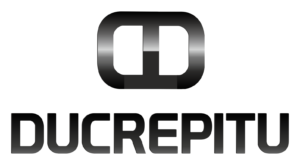
Digital Signage screens represent active and dynamic solutions not only for retail stores. Their goal is to target advertising or information to specific customer groups.
Digital Signage is used to display information in various places. Initially, they were applied in public institutions and on vehicles as a way of displaying advertisements or public announcements. With the flourishing of the franchise business model, digital signage has expanded significantly in retail stores, especially fast-food restaurants.
The goal of Digital Signage screens and electronic menu boards is to target advertising or information to a specific customer, at a specific time and to a specified location.

Most menu boards, which are used in fast food restaurants, function as a menu overview, price list and promotion of special stock offers. However, some franchises have many operations spread across the country, making it difficult to keep all offers and pricing information consistent. With printed menu boards or regular digital boards that display the entire menu as a single video file, changing the displayed content can be quite complicated. In addition, it is impossible to manage different offers separately for each store from one central management system.

Ducrepitu’s digital menu boards and billboards offer a wide range of features, making them a digital signage solution for all retail store owners. The displays we offer are verified by the owners of more than 2,000 retail stores with more than 10,000 displays worldwide.
Shelf displays
Shelf displays are an original addition to retail screens. Their wide dimensions predetermine their use on shelves, racks and counters.

Available dimensions:
- 42 x 8 cm
- 43 x 9.5 cm
- 60 x 6 cm

What do the advertising and menu boards offer
- Free templates and template design services that include text, images, and videos
- Individual content update for each text, image, and video component
- Remote, real-time / scheduled update via Google Cloud from anywhere in the world
- View linked content across multiple monitors (switch between full screen or independent menu view)
- Easy content update via smartphone
- Easily edit menu text with Google Sheet
- Easy image update via Google Drive / Photo
- Update of video menu using YouTube service
- Display of content compatible with electronic devices within the store (eg POS, electronic scale, vending machine, etc.)
- Display content compatible with IoT devices in the store (ie door sensor, motion sensor, button, etc.)
- Multilingual display using tablet or button

Digital menus and billboards consist of the following hardware and software components:
- Frame Media Player: an Android OS-based device that connects to various screens via HDMI to display content
- Display: connected to the Frame player via an HDMI cable, displays the content on the screen
- AIO Display: an all-in-one display with an integrated Frame player that is easy to install and connect to the network wirelessly; you can choose between a 49-inch widescreen display, a 26.5-inch square display and a 16.4-inch stretch display.
- Network router / switch: Frame player or AIO display connects to Google Cloud via router or switch, for the ability to update content
- Power switch: all digital signage devices connect to a single independent switch; You can turn the digital menu bar on and off with a single touch, as if you had turned on the light
- Template / Slideshow: the digital menu bar consists of text, image and video; these components are displayed in the set position for the set time; a template is a set structure that indicates where and how each component is located
- Content Editor: Install the editor on your smartphone or tablet to edit the template, create new slides, configure the slide list, or set the display calendar
- Viewer: software installed on the Frame player or AIO display to view content edited through the Content Editor
- Updater: software installed with the Viewer, for remote control purposes; The Viewer is regularly updated to maintain the functionality and stability of the solution
- Cloud: Specifically, Google Cloud to update and manage Frame players
- Manager: a web manager’s page through which you can monitor the display status of the Frame Media Player and the AIO display that is connected to the network, as well as the hardware, software, and content versions; you can also use remote control features such as software repeat, content update, and hardware restart
- In-Store Electronic / IoT Devices: A digital menu board or banner can be connected to various electronic and IoT devices in your store, for example with POS (to automatically arrange menus and prices, or offers according to their popularity or inventory), with a ticketing machine (to call your customer, when in line), with an input sensor (to display a welcome message to your customer), with a motion sensor (to display an advertisement on the menu bar when there is no customer in line) or with a button (which allows a foreign customer to choose their own language to be displayed in the menu)

With a variety of Frame templates, you can connect to a weather forecast, scheduler, or social media that you can use as an dashboard or as an advertising medium.
Are you interested in billboards or digital menus? Contact us!




